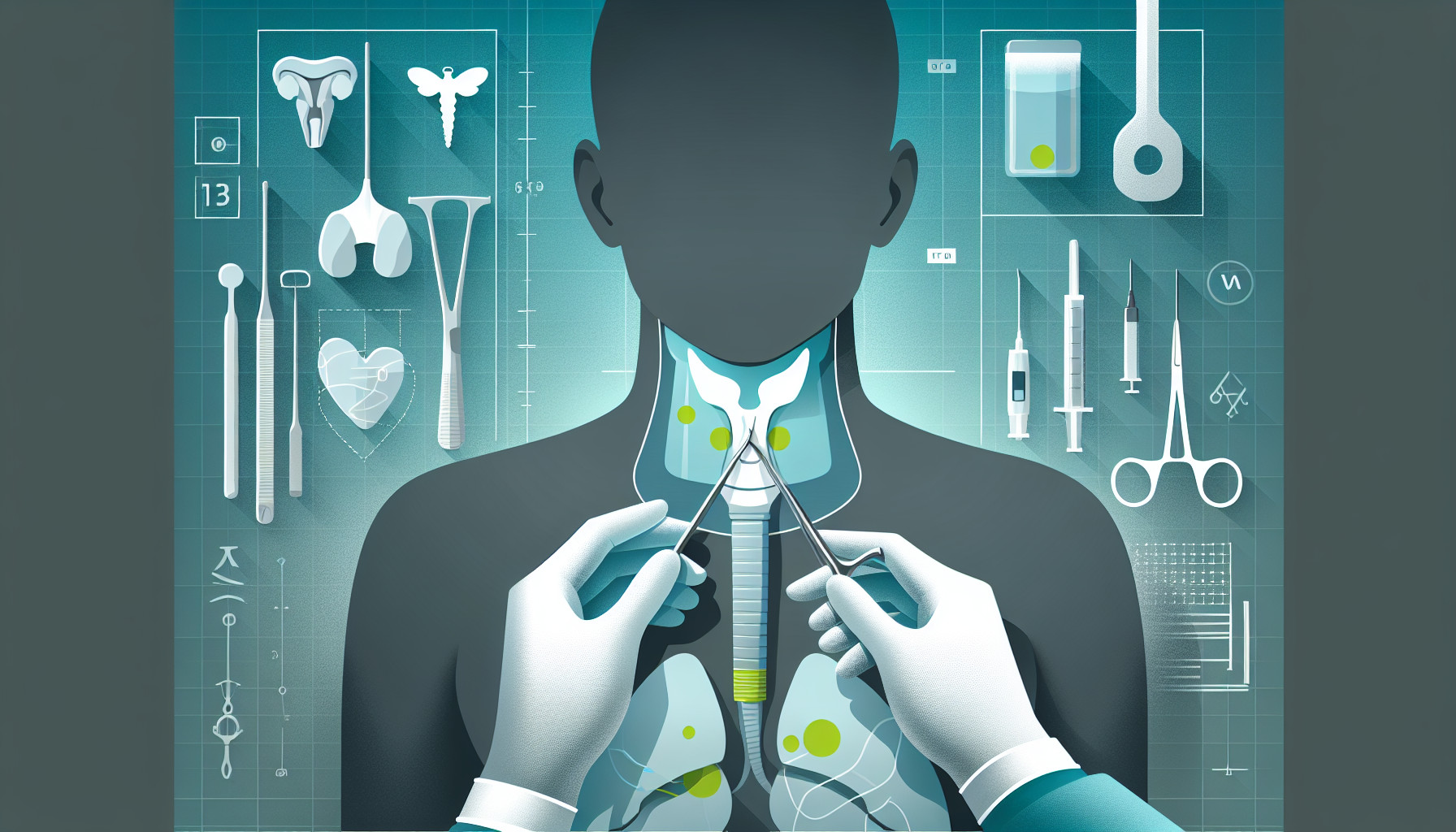Our Summary
This study compared two types of minimally invasive thyroid surgeries - robotic (using the da Vinci system) and endoscopic. Researchers looked at 258 robotic surgeries and 214 endoscopic surgeries, focusing on things like how long the operation took, how much fluid was drained during the surgery, the outcomes of lymph node dissection, and the incidence of hypoparathyroidism (a condition that can occur if the parathyroid glands are damaged during surgery).
The results showed that doctors needed more time to become proficient at the robotic surgery compared to the endoscopic surgery. Initially, the robotic surgeries also took longer and had more fluid drained. However, the robotic surgery had better results when it came to removing lymph nodes. Both types of surgeries were safe and did not result in permanent hypoparathyroidism or recurrent laryngeal nerve damage.
The study identified four stages in the learning process for both types of surgeries, each marked by improvements in skills. The endoscopic surgeries had a shorter learning curve, meaning doctors became efficient at them more quickly.
The conclusion was that both types of surgeries are good options, but each has its own learning curve and efficiency measurements. Despite the longer learning period for the robotic surgery, its benefits in complex dissections might make it worth the extra training. The study suggests that training programs should be tailored to each type of surgery to improve outcomes and efficiency. Future research should focus on improving training protocols and making these technologies more accessible, to improve patient care in thyroid surgery.
FAQs
- What are the key differences between robotic and endoscopic thyroidectomy procedures?
- How does the learning curve for robotic thyroidectomy compare to that of endoscopic thyroidectomy?
- What are the potential benefits of using robotic surgery for complex dissections in thyroid procedures?
Doctor’s Tip
One helpful tip a doctor might tell a patient about thyroidectomy is to follow the post-operative care instructions closely, including taking prescribed medications, attending follow-up appointments, and avoiding strenuous activities to ensure a smooth recovery process. Additionally, patients should communicate any concerning symptoms or changes in their condition to their healthcare provider promptly.
Suitable For
Patients who may be recommended for thyroidectomy include those with:
Thyroid cancer: Patients with thyroid cancer may require partial or total thyroidectomy to remove the cancerous tissue.
Benign thyroid nodules: Thyroid nodules that are causing symptoms such as difficulty swallowing or breathing, or are suspicious for cancer, may require thyroidectomy.
Hyperthyroidism: Patients with hyperthyroidism that is not controlled with medication may be recommended for thyroidectomy to remove part or all of the thyroid gland.
Large goiters: Goiters that are causing compression of nearby structures may require thyroidectomy to alleviate symptoms.
Recurrent thyroid nodules: Patients with recurrent thyroid nodules that continue to grow or cause symptoms may be recommended for thyroidectomy.
Graves’ disease: Patients with Graves’ disease, an autoimmune disorder that causes hyperthyroidism, may be recommended for thyroidectomy if other treatments are not effective.
Thyroid nodules with indeterminate biopsy results: Patients with thyroid nodules that have indeterminate biopsy results may be recommended for thyroidectomy to further evaluate the tissue.
It is important for patients to discuss their individual case with their healthcare provider to determine if thyroidectomy is the best treatment option for them.
Timeline
Before thyroidectomy:
- Patient undergoes initial evaluation and diagnostic tests to determine the need for surgery.
- Pre-operative counseling and education about the procedure and potential risks.
- Patient may need to undergo pre-operative preparations such as fasting and medication adjustments.
- Surgery date is scheduled and patient prepares for the procedure.
After thyroidectomy:
- Patient is closely monitored in the recovery room for any immediate post-operative complications.
- Patient may experience temporary hoarseness or difficulty swallowing due to anesthesia effects.
- Patient is typically discharged from the hospital within a day or two after surgery.
- Follow-up appointments are scheduled to monitor healing, thyroid hormone levels, and potential complications.
- Patient may need to take thyroid hormone replacement medication for the rest of their life.
- Over time, patient’s thyroid hormone levels are stabilized and they experience improved symptoms related to their thyroid condition.
What to Ask Your Doctor
- What are the potential risks and complications associated with thyroidectomy, specifically with robotic or endoscopic techniques?
- How experienced are you in performing robotic or endoscopic thyroidectomy procedures?
- How long does it typically take to recover from a robotic or endoscopic thyroidectomy compared to traditional surgery?
- What is the success rate of lymph node dissection using robotic or endoscopic techniques?
- Are there any long-term effects or limitations I should be aware of after undergoing a robotic or endoscopic thyroidectomy?
- Will I need to take any special precautions or follow a specific diet or exercise regimen after the surgery?
- How will my thyroid function be monitored after the procedure?
- Are there any specific post-operative care instructions I should follow to ensure a successful recovery?
- How soon can I expect to see improvements in my symptoms or overall health after undergoing a thyroidectomy?
- Are there any alternative treatment options to thyroidectomy that I should consider before making a decision?
Reference
Authors: Yu JF, Huang WY, Wang J, Ao W, Wang SS, Cai SJ, Lin SY, Zhou CP, Li MY, Cao XS, Cao XM, Tang ZH, Wang ZH, Hua S, Zhao WX, Wang B. Journal: Surg Endosc. 2024 Nov;38(11):6586-6596. doi: 10.1007/s00464-024-11247-2. Epub 2024 Sep 16. PMID: 39285042
